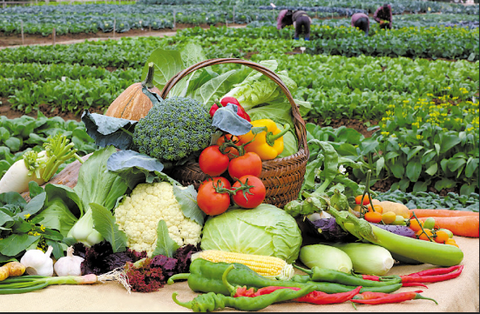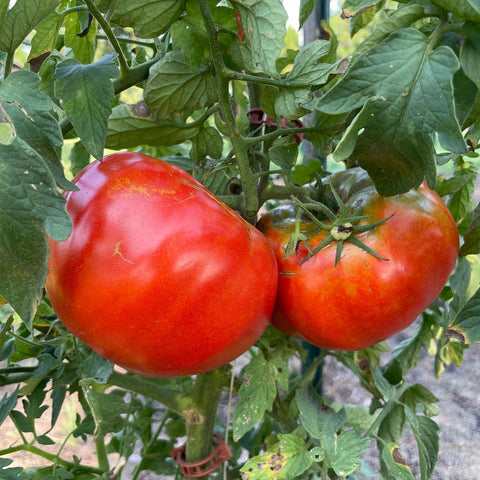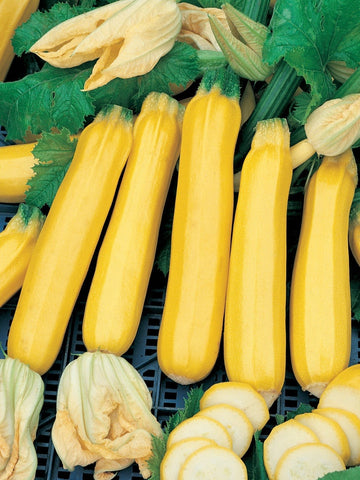There's something incredibly satisfying about growing your own vegetables, herbs, and fruits in a home garden. The joy of watching your plants thrive and the anticipation of the harvest are unmatched experiences for any gardener. However, when it comes to gardening, it's not just about getting your hands dirty; it's about maximizing your yield and reaping the rewards of your hard work. In this comprehensive guide, we'll explore the art and science of boosting yield in your home garden. Whether you're a seasoned gardener or just starting, these tips will help you cultivate a bountiful and fulfilling garden. The following content also has some reference value for raised garden beds.
Understanding the Basics of Yield in Gardening
Before we delve into the strategies for boosting yield, it's important to understand what yield means in gardening and why it matters.
Yield refers to the quantity of crops or produce harvested from a garden or a specific plant. It is typically measured in weight, volume, or count, depending on the type of crop. Yield is a critical metric for gardeners because it reflects the productivity and success of their gardening efforts.

Why does yield matter?
- Food Production: For those growing their own food, a higher yield means more fresh, organic produce for your table. It can lead to substantial savings on grocery bills.
- Self-Sufficiency: Gardening can contribute to self-sufficiency. A productive garden can reduce your dependence on store-bought produce.
- Community Sharing: Excess produce can be shared with neighbors, friends, or local food banks, fostering community bonds and reducing food waste.
- Emotional Satisfaction: A thriving garden with high yields can bring a sense of accomplishment, happiness, and well-being to the gardener.
Now, let's explore some effective strategies to boost yield in your garden:
1. Choose the Right Location
The first step to maximizing yield is selecting the right location for your garden. Consider the following factors:
- Sunlight: Most vegetables and fruits require at least 6-8 hours of direct sunlight daily. Pick a location that receives plenty of sunlight throughout the day.
- Soil Quality: Conduct a soil test to assess the pH and nutrient levels in your soil. Amend the soil as needed to ensure the best possible growing conditions.
- Proximity to Water: Ensure your garden is easily accessible to a water source. Consistent and adequate watering is crucial for high yields.
2. Practice Crop Rotation
Crop rotation involves changing the location of crops in your garden each year to prevent the buildup of soil-borne diseases and pests. This practice helps maintain soil fertility and encourages healthy plant growth, ultimately leading to better yields.
Rotate your crops in a way that prevents plants from the same family from occupying the same space for several years. If you grew tomatoes in one bed this year, for instance, plant them in a different bed the following year.

3. Improve Soil Health
Healthy soil is the foundation of a productive garden. To boost yield, focus on improving soil health through these methods:
- Compost: Add compost to your garden beds regularly to increase organic matter and nutrient content in the soil. Compost enriches the soil and enhances its ability to retain moisture.
- Mulch: Apply mulch around your plants to regulate soil temperature, reduce weed growth, and retain moisture. Organic mulches like straw or wood chips can gradually decompose, further enriching the soil.
- Cover Crops: Consider planting cover crops like clover or vetch during the off-season. Cover crops help prevent soil erosion, fix nitrogen in the soil, and improve soil structure.
- Crop-Specific Fertilization: Different crops have varying nutrient requirements. Research the specific needs of the plants you're growing and provide them with the appropriate fertilizers or soil amendments.
4. Water Wisely
High yields and healthy plant growth depend on proper watering. Follow these guidelines:
- Deep Watering: Water deeply and less frequently rather than shallow, frequent watering. Deep watering encourages the development of deep roots, making plants more resilient during dry spells.
- Mulch: As mentioned earlier, mulch helps retain soil moisture, reducing the frequency of watering.
- Drip Irrigation: Consider using drip irrigation systems that deliver water directly to the base of plants, minimizing water waste and evaporation.
- Watering Time: Water your garden in the morning to allow foliage to dry before evening, reducing the risk of fungal diseases.
5. Choose High-Yield Varieties
When selecting the varieties of vegetables and fruits to grow in your garden, opt for high-yield varieties. These varieties are bred to produce more fruit or vegetables per plant. Look for terms like "high-yield," "prolific," or "productive" in seed catalogs or plant descriptions.
6. Pruning and Thinning
Pruning and thinning are essential practices for maximizing yield, especially for fruit-bearing plants like tomatoes, peppers, and fruit trees:
- Tomatoes: Remove suckers (small side shoots) that form between the main stem and branches. Pruning will increase air circulation and focus energy on fruit production.
- Fruit Trees: Prune fruit trees during their dormant season to remove dead or crowded branches. This allows sunlight to penetrate the canopy, promoting fruit development.
- Thinning: For fruit trees and bushes, thinning is crucial. Remove excess fruit when they're still small to ensure that the remaining fruit develops properly and doesn't weigh down the branches.
7. Pest and Disease Management
Protecting your garden from pests and diseases is vital for maintaining high yields. Implement integrated pest management (IPM) techniques, which include:
- Regular Inspection: Regularly inspect your plants for signs of pests or diseases. Early detection allows for prompt intervention.
- Natural Predators: Encourage beneficial insects like ladybugs and lacewings that prey on garden pests.
- Organic Controls: Use organic methods like neem oil or insecticidal soap to manage pests without harming beneficial insects.
- Crop Rotation: As previously indicated, crop rotation can aid in preventing the accumulation of soil-borne diseases.
8. Trellising and Support
For vining or tall plants like beans, peas, cucumbers, and tomatoes, provide trellises or support structures. This not only saves space but also allows the plants to grow vertically, optimizing sunlight exposure and air circulation.
9. Succession Planting
Succession planting is a process that involves planting new crops as soon as one crop is harvested. This technique ensures a continuous harvest throughout the growing season, maximizing your garden's yield potential.
For example, after harvesting lettuce in the spring, you can plant heat-tolerant crops like peppers or beans in the same space.

10. Keep Records
Maintain a gardening journal to track your planting dates, varieties, and the yields you achieve each season. This record-keeping will help you learn from your successes and failures, allowing you to make informed decisions to boost future yields.
Conclusion: Cultivating Abundance in Your Garden
Maximizing yield in your home garden is a fulfilling and rewarding endeavor. By implementing these strategies and embracing the joys and challenges of gardening, you can cultivate an abundance of fresh, flavorful, and nutritious produce right in your backyard. As you nurture your garden and witness the fruits of your labor, you'll not only savor the delicious harvest but also harvest happiness, satisfaction, and a deeper connection with nature. So, roll up your sleeves, pick up your gardening tools, and embark on a journey of bountiful harvests and endless joy in your garden.









